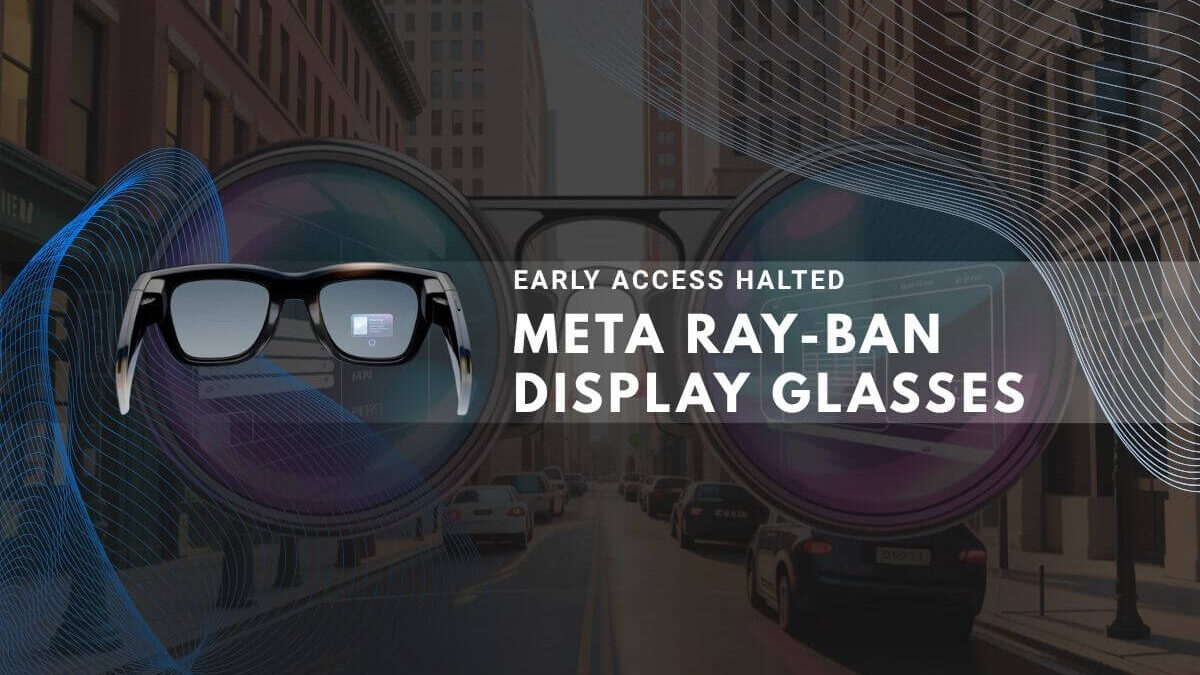Meta Ray Ban Display glasses ai, paired with the Neural Band wrist controller, display glasses launch in the U.S. on September 30, 2025, at $799. These glasses launch combine a discreet in-lens micro-OLED display with electromyography-based gesture control, delivering hands-free glasses AI assistance and advanced glasses AI features while preserving natural vision.
Design and Comfort Meta Ray-Ban
The glasses use Ray-Ban’s classic Wayfarer styling in matte Black and Sand transition lenses. The slightly thicker arms house waveguide optics, a micro-display, camera, microphones, and speakers without adding bulk. Adjustable nose pads and spring hinges ensure a secure fit for extended wear.
Charging Case
A collapsible USB-C charging case adds 30 hours of mixed-use battery life and folds small enough to fit in a pocket. The case also houses status LEDs indicating remaining charge.[2]
Display and Interface
An off-axis 600×600-pixel micro-OLED display projects up to 5,000 nits of peak brightness into the right lens. This makes text and graphics legible both indoors and under direct sunlight. The HUD remains hidden until activated, preserving full peripheral vision when not in use.[2]
Core Features
- AI Queries: Text responses powered by Meta AI.
- Live Captions: Real-time transcription and translation of speech.
- Camera Preview: 12 MP stills with up to 3× digital zoom.
- Messaging and Calls: Private display of SMS, WhatsApp, Messenger, and two-way video.
- Navigation: Turn-by-turn walking directions in select cities.
Gesture Control
The Neural Band wrist controller decodes four primary gestures via surface electromyography and on-device machine learning trained on data from over 200,000 participants. The gestures include:
- Double pinch (middle finger and thumb) to toggle the HUD.
- Pinch (index finger and thumb) to select items.
- Swipe along a curled index finger to scroll.
- Pinch and twist to adjust volume or zoom.[3]
Battery and Charging
- Glasses
- Up to six hours of mixed-use battery life.
- Fast-charge to 50% in 20 minutes.
- Charging case adds 30 hours of runtime.[4][2]
- Neural Band
- Up to 18 hours per charge.
- Magnetic pin-type cable for charging, similar to fitness trackers.[2]
Real-World Performance
Hands-free photography with the viewfinder proved effective for wildlife and urban exploration. Instant AI answers streamlined quick look-ups in bookstores and museums. Live captions improved conversation clarity in noisy settings. However, the limited app ecosystem—no full web browsing or native Facebook and Threads support—often drove users back to their phones. Driving safety also remains a concern: the HUD stays active by default with no automatic disablement for vehicular use, requiring manual activation of audio-only mode.
Meta plans to expand availability to Canada, France, Italy, and the U.K. in early 2026. Upcoming software updates aim to enable on-surface text tracing, deeper third-party app integration, and enhanced AI features. Wider prescription-lens compatibility through optical partners and improved power efficiency will be crucial for broader adoption.
